Fibroblast Therapy
About Fibroblast Therapy
Fibroblast Therapy (Skin Regenerative Medicine) is a treatment that involves cultivating and transplanting your own skin cells without the need for surgery or injections of fat or foreign substances.
By transplanting and multiplying fibroblasts (skin cells) that have decreased due to aging or damage caused by factors such as UV radiation, this treatment aims to restore the skin to its original state before the onset of aging symptoms (when fibroblasts are depleted).
Since your own cells are transplanted, it is a highly safe procedure that not only improves skin elasticity and reduces wrinkles but also helps to slow down the progression of aging.
About Dermal Fibroblasts
Dermal fibroblasts, also known as dermal fibrocytes, are cells located in the dermis layer of the skin. They play a crucial role in maintaining the skin's firmness and hydration by synthesizing essential components such as collagen, hyaluronic acid, elastin, and various proteins. These fibroblasts are responsible for producing and organizing the extracellular matrix, which provides structural support to the skin and contributes to its youthful appearance.
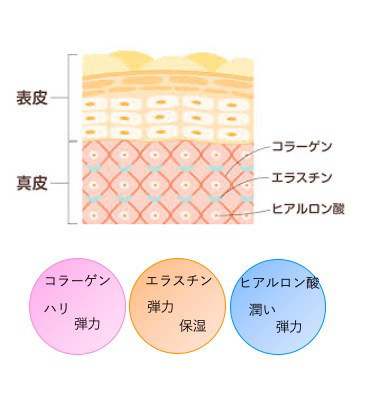
Collagen
Collagen is a protein fiber that makes up approximately 70% of the dermis. It forms a mesh-like structure and acts as a pillar to support the epidermis and subcutaneous tissue. It is an essential component for skin firmness and plays a crucial role in giving the skin a youthful appearance with resilience and elasticity.
Elastin
Elastin is a protein that accounts for about 2% of the dermis. It possesses rubber-like stretchability and elasticity. It binds collagen fibers together and contributes to the creation of elastic skin. Elastin is an important component for skin elasticity.
Hyaluronic Acid
Hyaluronic acid is a mucopolysaccharide that fills the gaps between collagen and elastin. It is known to retain 6 liters of water per gram of hyaluronic acid. Its gel-like nature enables it to hold a significant amount of moisture, providing cushioning support and elasticity. Hyaluronic acid is a crucial component for skin hydration.
Treatment Sites
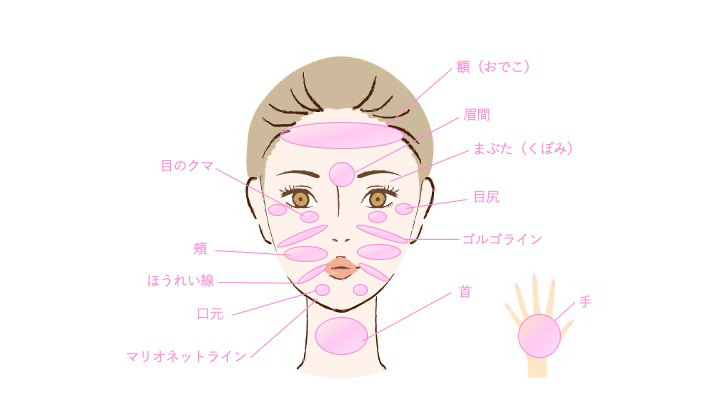
The required amount of cell transplantation (quantity of skin cells) varies depending on the treatment site and treatment area. For more details, please contact us for further information.
Treatment Process
- Consultation: A consultation with a physician will be conducted.
- Blood Test: A blood test will be performed at our clinic or the nearest medical facility.
- Skin Harvesting: Skin will be harvested from behind the ear for cell culturing purposes.
- Culturing: Skin cells will be cultured at a Ministry of Health, Labour and Welfare-approved cell culturing center (CPC).
- Transplantation: The cultured skin cells will be transplanted into the areas of concern.
About the treatment:
Skin Harvesting
- Procedure time: Approximately 15 minutes
- Pain: Anesthesia will be administered, so there is minimal discomfort.
- Bathing/Showering: Possible from the same day
- Exercise/Alcohol: Possible from the next day
- Other: Blood will be collected for cell culturing
Cell Transplantation
- Procedure time: Approximately 1 hour
- Recommended number of sessions: It is recommended to have a second transplantation within 3 weeks after the initial transplantation to enhance the engraftment of skin cells and observe noticeable effects. SubseQ:uently, undergoing treatment once every 1-2 years is effective.
- Pain: Anesthesia will be used, so there is minimal pain
- Redness/Swelling: Lasts for about 3-4 days (individual variations may occur)
- Makeup: Possible from the same day
- Showering: Possible from the same day (bathing is possible from the next day)
- Exercise/Alcohol: Possible from the next day
- Other: During the first month after transplantation, please avoid activities that may stimulate the skin, such as esthetic treatments or massages, to allow the cells to properly settle.
Cell Storage
By using cell storage services, it is possible to store and preserve skin cells for an extended period of time. This allows the retrieval of young cells from the time of skin harvesting, even after several years, for receiving treatments.

FAQ
- What are the effects?
- The treatment can improve wrinkles, sagging skin, dark circles, and provide a youthful appearance to the skin. It is particularly effective for fine lines.
- Does the effectiveness depend on age?
- Age is not a determining factor. This treatment is suitable for individuals of any age.
- When will I start seeing results?
- While individual experiences may vary, most people start noticing the effects of the treatment within 1 to 3 months after cell transplantation.
- How long do the effects last?
- The effects of the transplantation are generally observed for about 2 to 3 years, but individual results may vary.
- How much skin is collected during the procedure?
- Approximately 7x3mm (about the size of a grain of rice) of skin is collected from behind the ear.
- Why is skin collected from behind the ear?
- Skin behind the ear is less susceptible to damage from factors like UV radiation, and it ages slower compared to facial skin.
- What is the appropriate amount of cells for transplantation?
- Typically, 4cc of cells is used for the entire face.
- Are there any side effects?
- Since your own cells are used for transplantation, there are no major side effects. However, some minor side effects may occur such as redness, pain, swelling, and bruising, which usually resolve within 1 to 2 weeks. Allergic reactions to anesthesia used during the procedure are also possible.
- Can I combine this treatment with other cosmetic procedures?
- Combining this treatment with other cosmetic procedures is generally possible. After the regeneration of the skin's foundation (dermis) through cellular regenerative medicine, you can enhance the improvement of the epidermis through other cosmetic procedures, achieving synergistic effects. However, it is advisable to consult with your healthcare provider as some procedures may interfere with cell engraftment.
- How is it different from other cosmetic procedures?
-
Cellular regenerative medicine for skin rejuvenation provides fundamental treatment for aging skin. Here's a comparison of various treatments in terms of duration, corrective effects, side effects, and the time it takes to see results:
Treatment Effects Duration Modification or deformation Side Effects Time to See Results Fibroblast Therapy Fundamental treatment None 1~12 months Hyaluronic Acid 3~18 months Few Immediate Botox 3~6 months None, but resistance may develop 1~2 week High-Frequency or Laser 3~6 months Few 1~3 months PRP Therapy 2~3 months Few 2~3 months - Can I use my own child's cells for the treatment?
- To ensure safety, only your own cells can be used for the treatment. Even if they are from your own child or sibling, they are considered as someone else's cells.
- Are there any precautions after the treatment (cell transplantation)?
- On the day of cell transplantation, it is advised to avoid washing the treated area, applying makeup, taking a bath, or using a sauna. Additionally, for the first month after cell transplantation, it is recommended to refrain from esthetic treatments, massages, Korean traditional medicine, or other beauty treatments that may stimulate the transplanted cells.
- What is the schedule for fibroblast therapy?
- The entire process, from the initial consultation to cell administration, takes approximately 2 and a half months. Afterward, we recommend maintenance treatments once a year

- Why are cells transplanted twice during the initial treatment?
- Skin cells gradually decrease over time. By performing two cell transplantations, more skin cells can be effectively engrafted. Moreover, stem cells have the ability to gather at damaged areas and activate cell rejuvenation to heal the wounds uickly. The first transplantation stimulates cell activation by creating small wounds in the skin, and the second transplantation further enhances
Case
CaseA
Before treatment
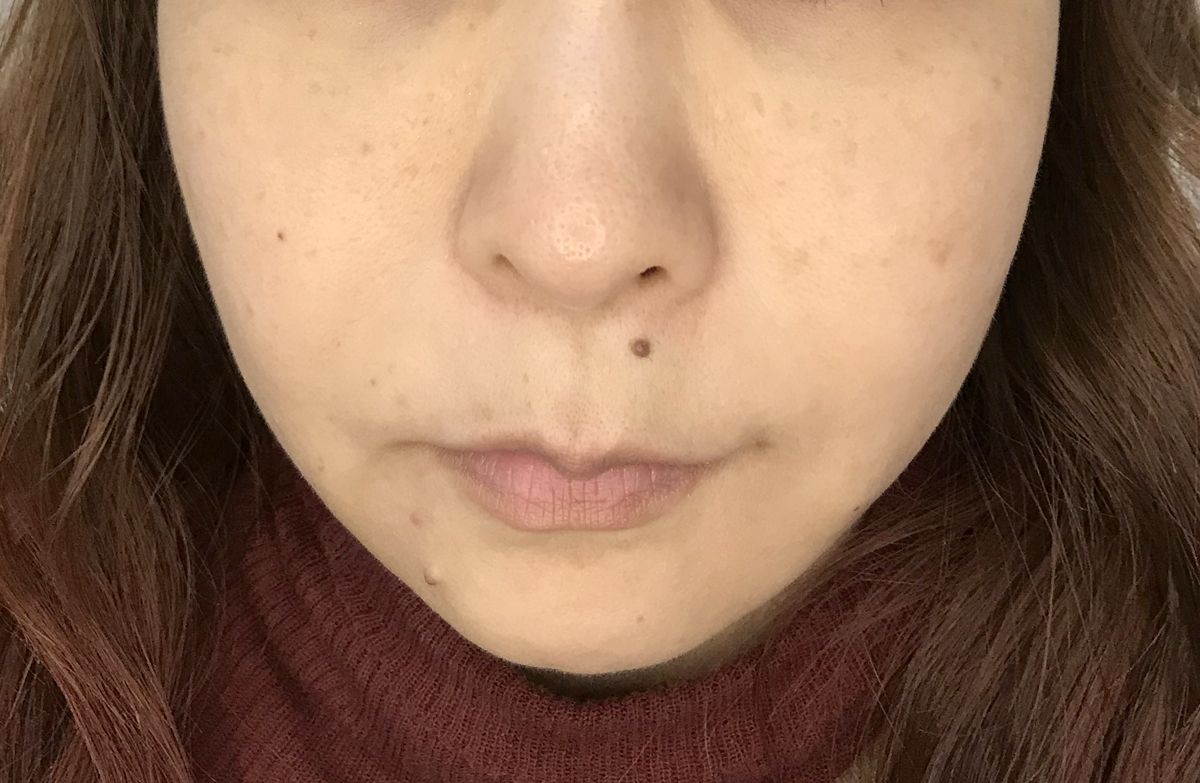
After treatment
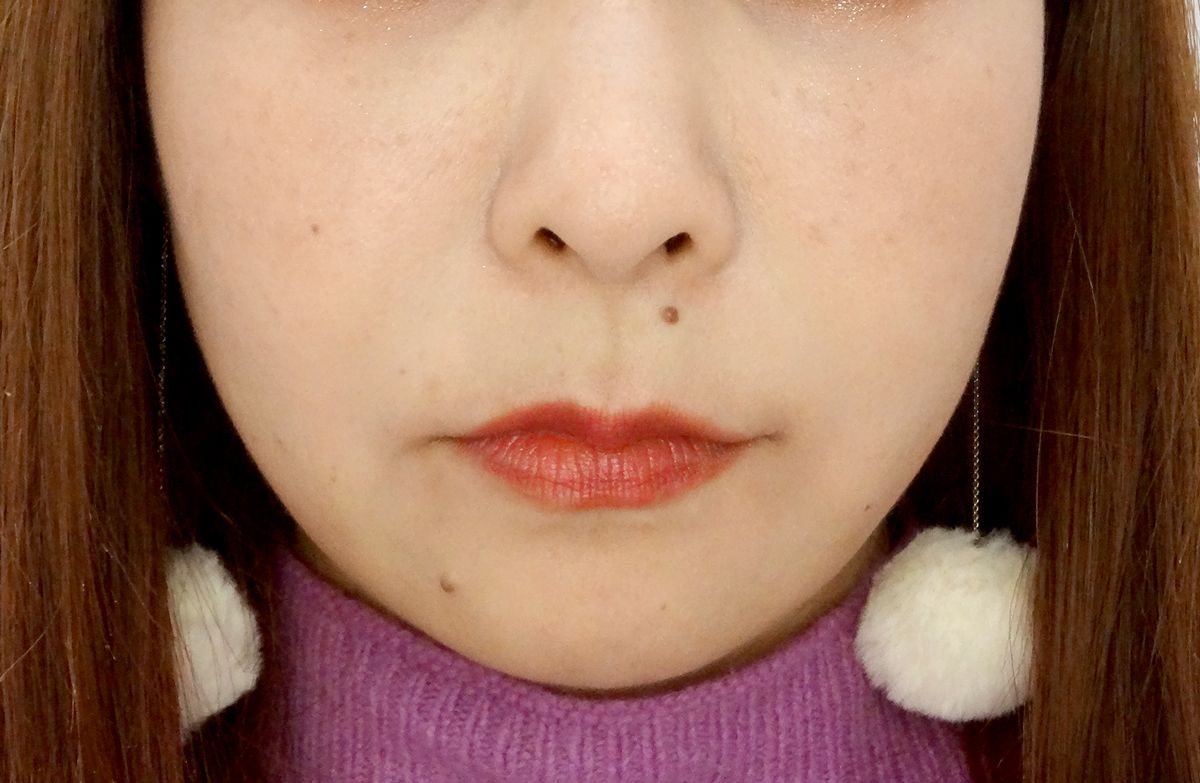
CaseB
Before treatment
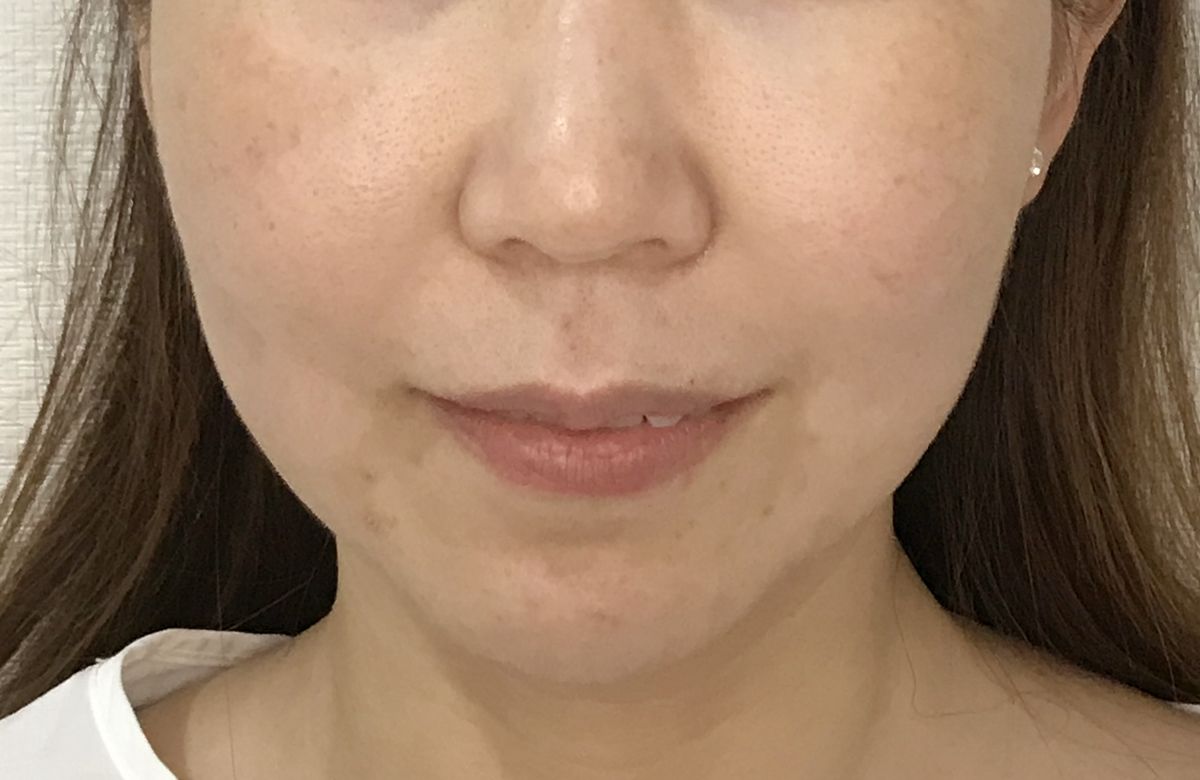
After treatment
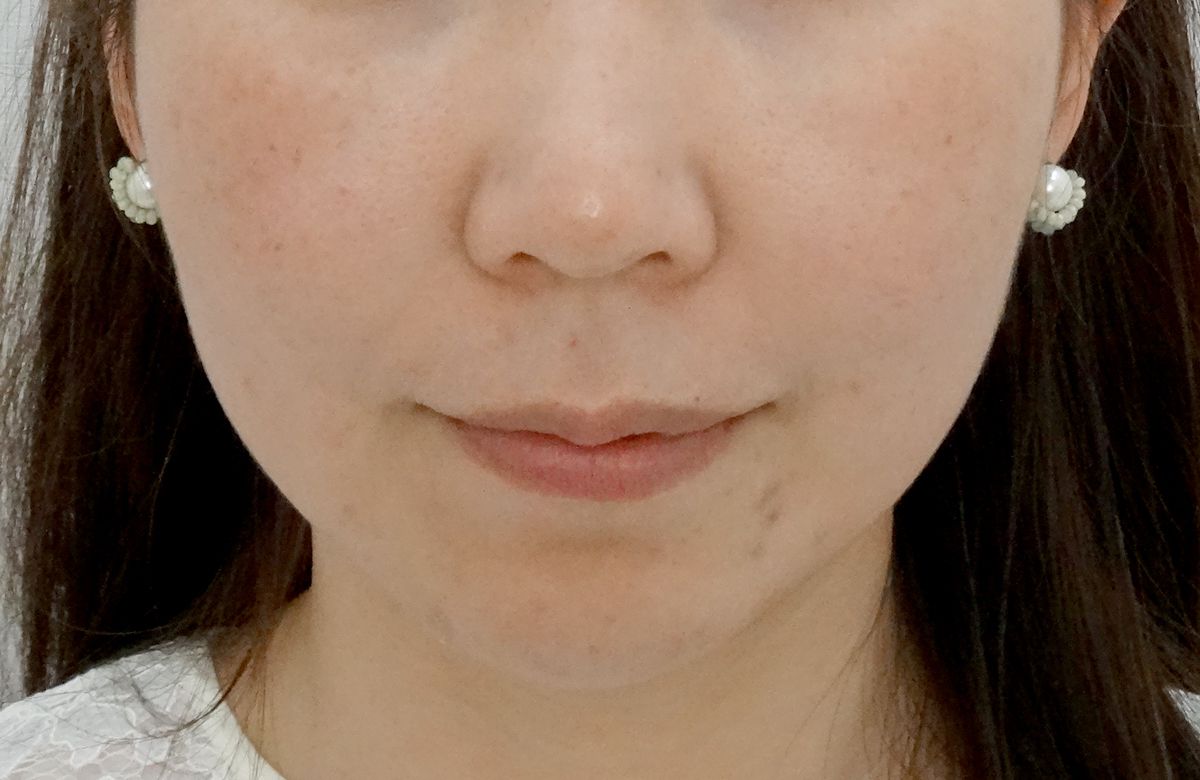
CaseC
Before treatment
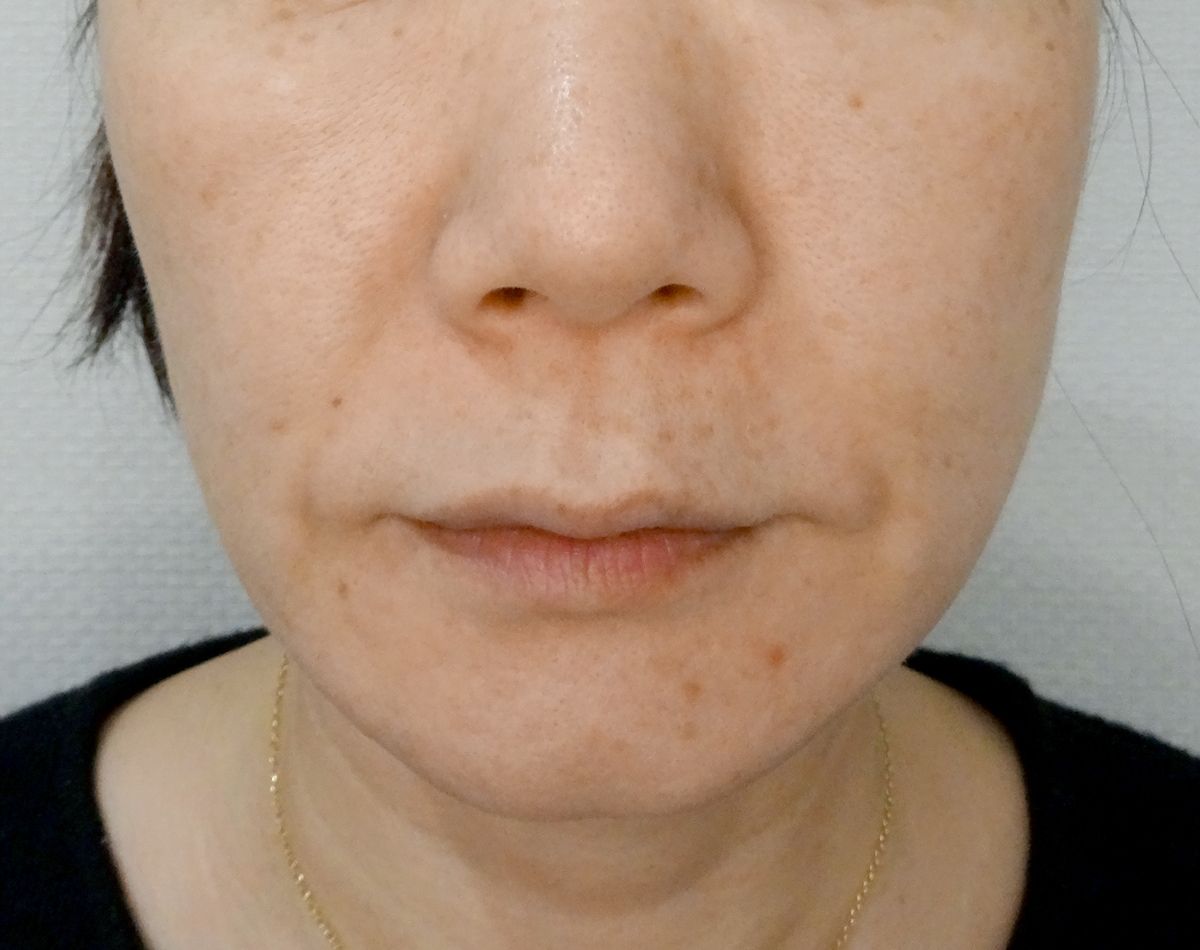
After treatment
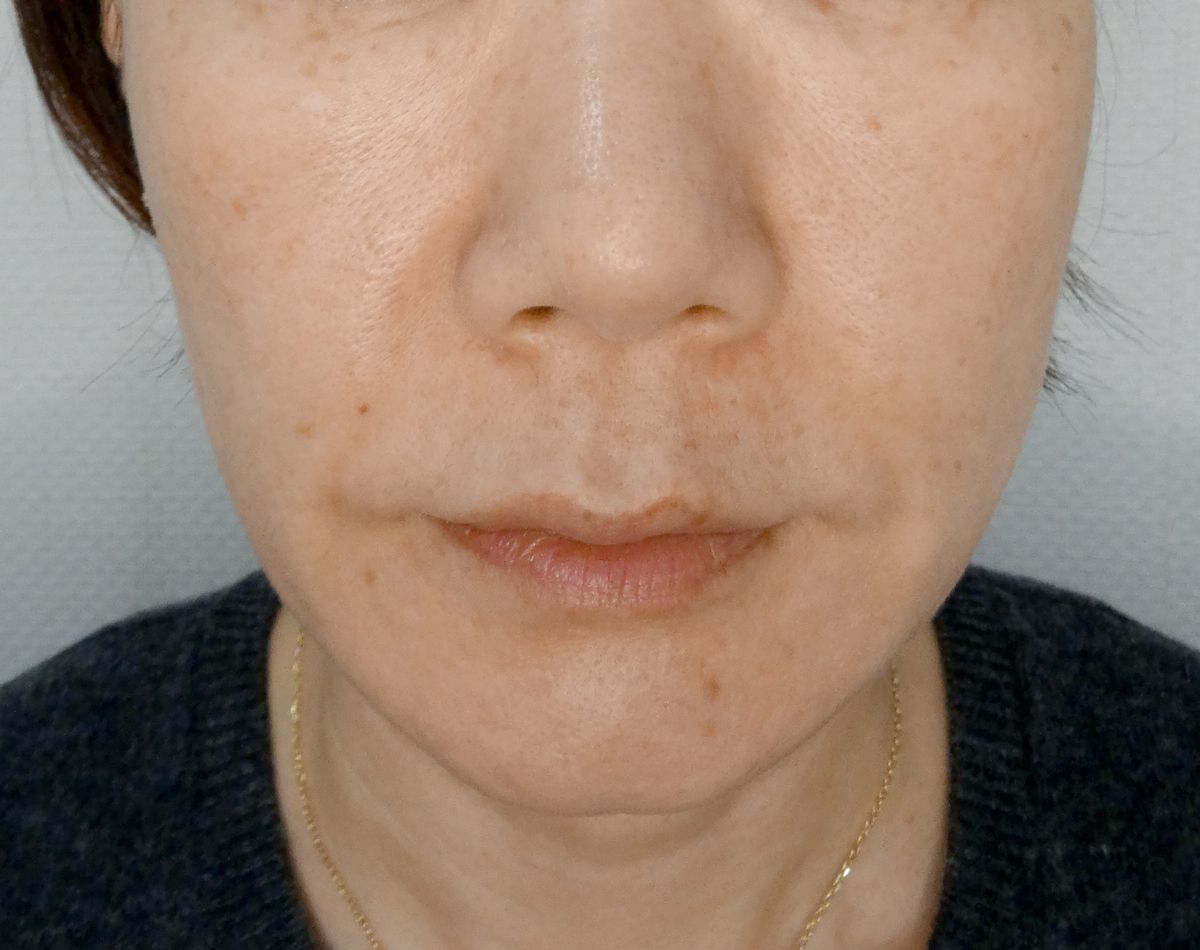
CaseD
Before treatment
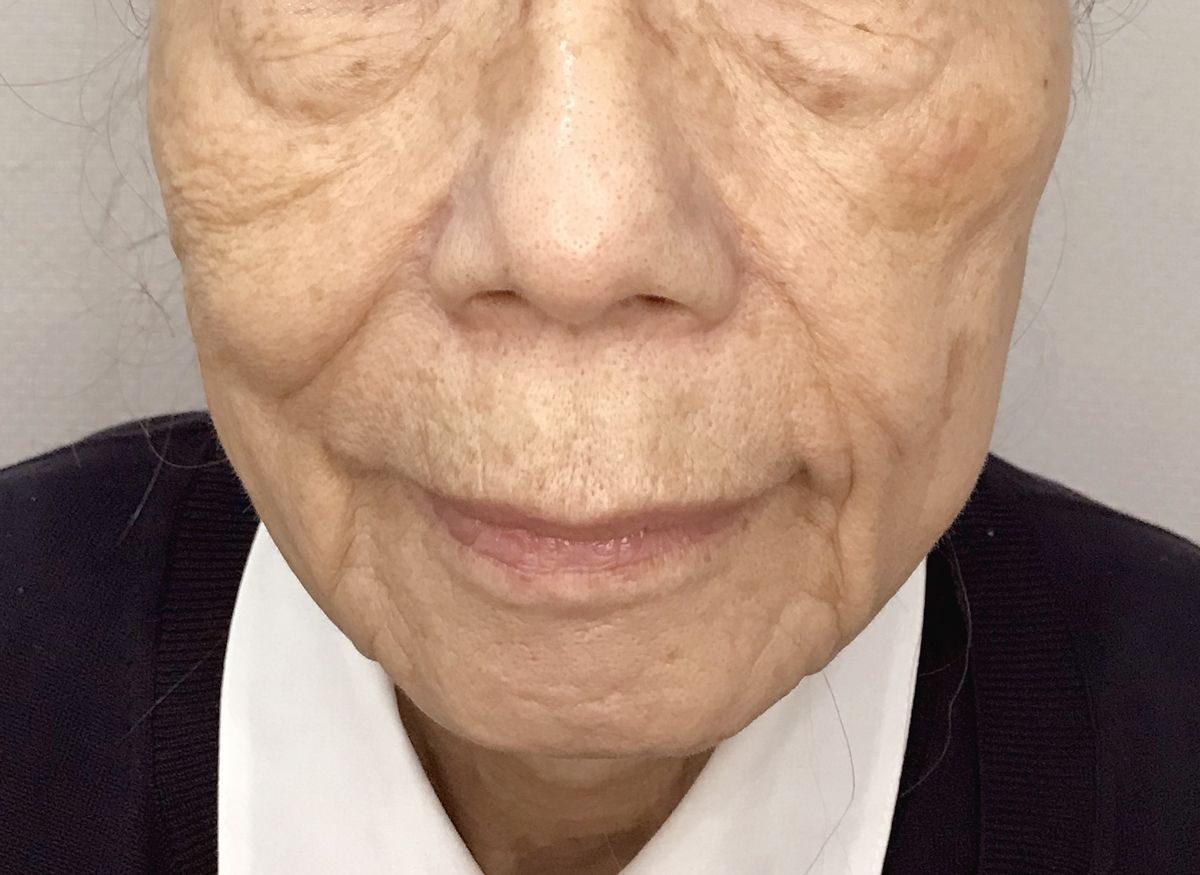
After treatment
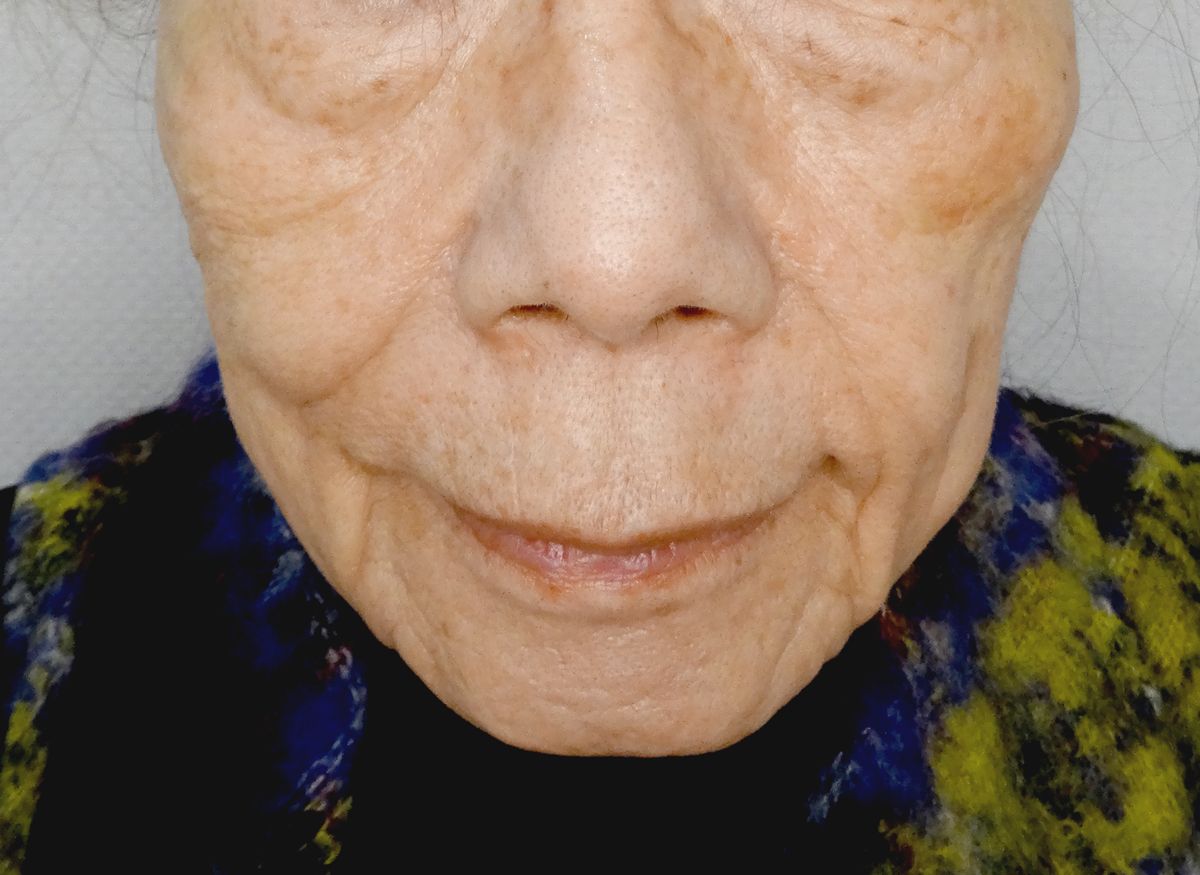
- Treatment Name
Dermal Fibroblast Therapy - Description of the treatment
Dermal Fibroblast Therapy is a treatment that involves harvesting the patient's skin cells, culturing them in a specific cell processing facility, and then transplanting the cultured dermal fibroblasts into the areas of concern related to aging, aiming to improve the symptoms of aging. - Side effects (risks) of the treatment
Possible side effects of this treatment include internal bleeding, pigmentation changes, formation of lumps or nodules due to abnormal proliferation of cells, and a potential worsening of autoimmune conditions due to the transplantation of fibroblasts.
当院の特徴
通いやすいクリニック
数寄屋橋交差点から徒歩2分、東京メトロ銀座駅B7出口から徒歩2分、瀟洒なビルの12階に位置し、景観の素晴らしいゆったりと落ち着いたスペースで診療をおこなっています。
また、皆さまが安心して通っていただけるよう最適な価格で施術をご提供しております。
快適な空間で、日常生活の疲れやストレスを癒し、ご自身の健康と美に向き合ってみてはいかがでしょうか。
プライバシー重視
患者様お一人お一人としっかり向き合い、最適な施術をご案内できるよう完全予約制を採用しております。完全予約制のためお待たせすることのない上、他の患者様とお顔を合わせることのないよう配慮しております。個室も数多く用意しておりますので、プライバシーを重視される方は特に安心して通っていただけます。
再生医療に専門性のある医師
当クリニックの院長は、脂肪幹細胞や幹細胞培養上清液などの再生医療に長年従事しており、知識、経験が豊富にございます。
美容分野においても20年以上美容クリニックにて経験を積んだベテラン医師が対応いたしますので、再生医療·美容医療どちらにおいてもお悩みを解決できるようお手伝いをいたします。
肌診断に対応
最新AIと5種類の光で現在の肌状態だけではなく、未来の肌状態をシュミレーションします。肌の変化の予測や、肌トラブルが起きやすい部位を視覚的に認識することで、必要なケアがわかります。
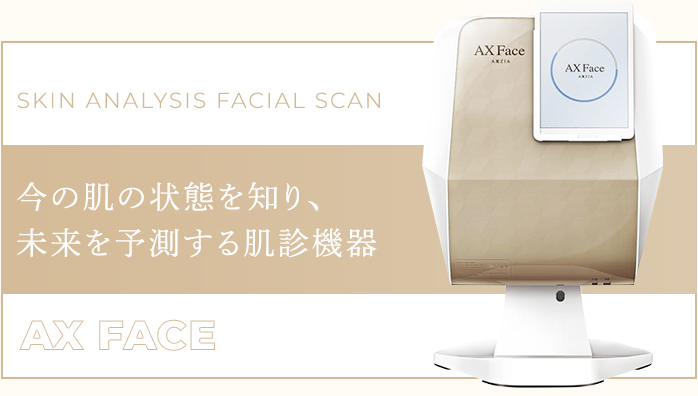
「糖化懸念」「赤み(敏感肌)」「毛穴」「シミ」「シワ」「ニキビ」「毛穴」「目元分析」が視覚的に認識できます。また、撮影結果をスマートフォンに送信することで、ご自宅でも診断結果を確認することができます。
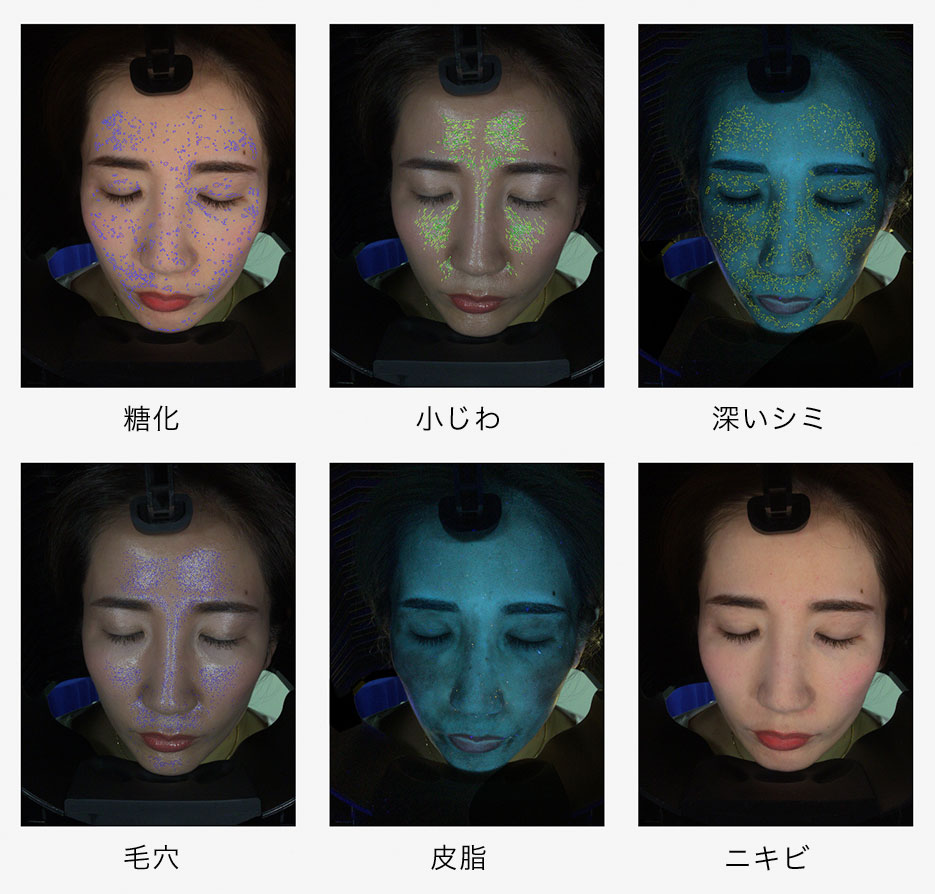
「どんな肌治療をしたらいいのか分からない」「治療の効果がでているか知りたい」「普段のスキンケアは肌に合っているか心配」「今後のシミやシワが気になる」などのお悩みをお持ちの方は、一度肌診断をお受けください。
院長ブログ
院長ブログでも線維芽細胞療法についてご紹介しています。

こちらの施術内容ページは医学的・専門的な内容の為、当院院長の三島 雅辰監修の元作成しております。
資格:日本外科学会認定医、日本医師会認定産業医



